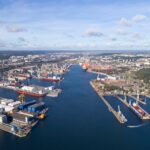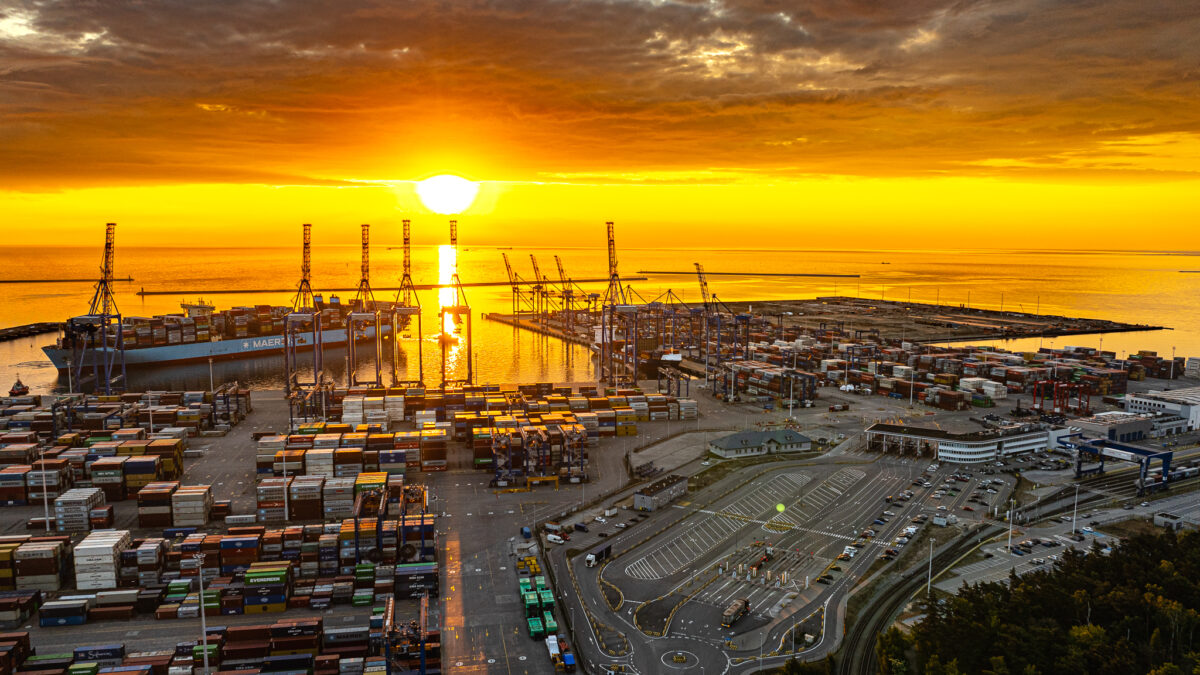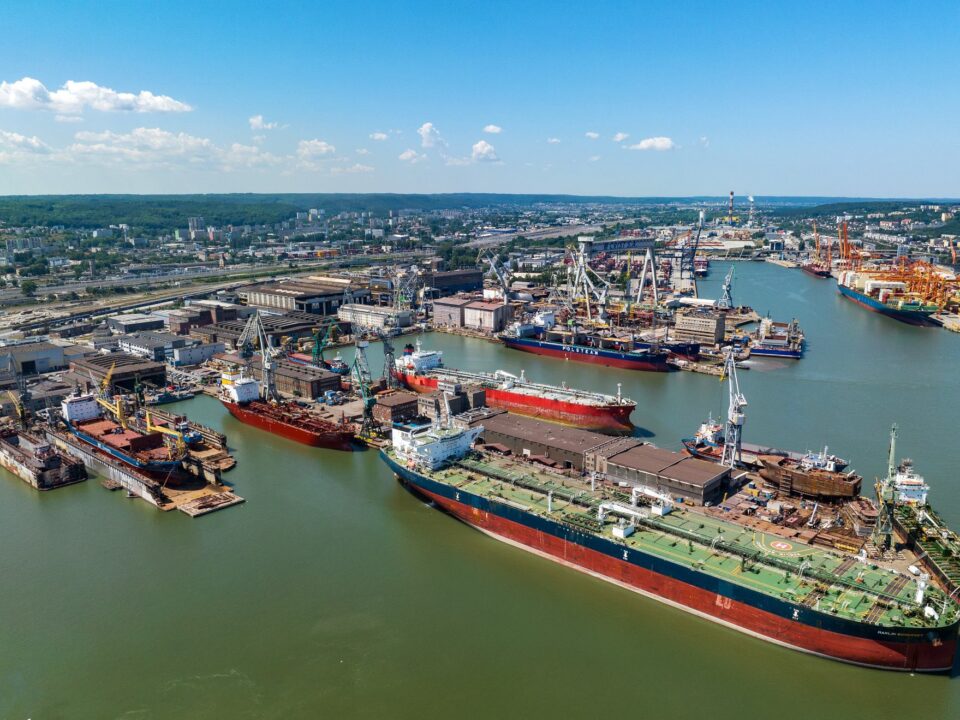
Stable Performance of Seaports
6 August 2025
Caring for European industry
22 August 2025Polish container terminals can definitely count the first half of 2025 as a success. The total transshipment volume of 1.87 million TEUs is the best half-year result ever, improving last year’s result by more than 20%. The terminals handled an average of 312,000 TEUs per month, with a fluctuation of about 5%. This means that despite market challenges, the ports continued their stable growth trend and maintained a high operational level. Among the months, March came to the forefront, with as many as 332,000 TEUs handled. February was traditionally the weakest, with a result of just over 286,000 TEUs.
The Baltic Hub, the largest of the terminals, handled nearly 1.3 million TEUs in the first half of the year, a 20% year-on-year increase, confirming its dominant position in the region. Against the background of the overall market, the weakest month for Baltic Hub was February (just under 196,000 TEUs), while the terminal recorded its best result in June, reaching a record 233,000 TEUs, improving on April’s result.
Among terminals, Gdynia’s BCT recorded the lowest growth rate – 14% is below the market average, achieved by handling 305,000 TEUs. However, it is worth noting that the turnover dynamics at BCT were driven primarily by the growth of 40′ containers, whose number increased by nearly 20% compared to the year before. There was also a noticeable jump in the transshipment of empty vessels, which may indicate changes in shipowners’ supply chain strategies. The volume of full containers in imports and exports remained similar to last year.
GCT in Gdynia, on the other hand, boasts the highest growth rate in the period under review – 229 thousand TEUs and as much as 26% increase in turnover compared to the first half of 2024. The weakest month for the terminal was January (just over 32 thousand TEUs), and the best month was May, which brought a record 42 thousand TEUs. Import volumes are clearly on the rise here, with a 36% increase indicating that GCT is beginning to benefit from newly established partnerships, such as the Gemini alliance, whose ships have been regularly calling at the terminal since spring.
DB Port Szczecin recorded the largest percentage increase – transshipment volumes rose by as much as 35% compared to the first half of last year, reaching an average of nearly 8,000 TEUs per month. As in the Baltic Hub, monthly deviations were small, indicating a stable flow pattern. 40′ containers played a particular role, with imports up by as much as 62%.
A number of factors are contributing to the growth trend of the first six months of this year. Globally, the container sector continues to face geopolitical tensions – from the volatile situation in the Red Sea to the effects of the US-China trade wars. Added to this are regulatory pressures (decarbonization of the economy) and thus rising production costs, as well as uncertainty about the pace of consumer demand recovery in Europe. The ongoing conflict in Ukraine generating a stream of cargo handled at Polish ports is not without significance.
Given a number of geopolitical factors dynamically affecting the freight market, the turnover forecast for the second half of the year seems highly uncertain. Nevertheless, based on the SARIMA* model, which accounts for both seasonality and trend in monthly data, 3 potential scenarios for the container market can be determined.
The optimistic scenario assumes that Polish container terminals will maintain a high pace, with monthly transshipments of 369-445,000 TEUs. On an annual basis, this would mean a total of 4.4-4.6 million TEUs. Such an option could materialize if the global economy avoids further turbulence, freight rates and fuel prices remain at predictable levels, and the political and economic situation allows infrastructure investments to be made. Additional support would come from rising maritime trade volumes thanks to the recovery of consumer demand in the European Union, a stable situation in Asia and the Middle East, and the expansion of intermodal connections, which will increase the attractiveness of Polish ports. It is also not insignificant to maintain the capacity of shipping lanes without blockages and restrictions due to geopolitical tensions, as well as greater predictability of supply chains due to the digitization of logistics services.
The neutral scenario – “business as usual” – predicts monthly volumes of 310,000-350,000 TEUs, giving an annual result of about 3.8-4 million TEUs. This option is the most likely, unless major perturbations on the world’s sea lanes or rising geopolitical tensions lead to the emergence of so-called black swans
The pessimistic scenario assumes that monthly transshipments could fall to 226-253,000 TEUs, which would mean an annual volume of 3.3-3.4 million TEUs. Such a scenario could come true if geopolitical tensions worsen, shipping on key routes is disrupted or European demand for consumer goods weakens. High fuel prices and ongoing climate regulations remain an additional risk factor.
*The forecast was based on the SARIMA (Seasonal AutoRegressive Integrated Moving Average) model, which was used to analyze monthly data from January 2022 to June 2025. The model accurately captures recurring seasonality and trend in the data, and the 95% confidence interval defines the limits of the scenarios – pessimistic, neutral and optimistic.
The article was written in collaboration with Namiary Na Morze i Handel – a biweekly magazine providing expert information on the most important events and issues in the Polish maritime economy.





